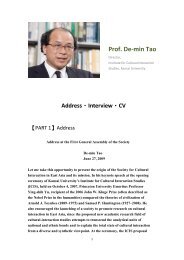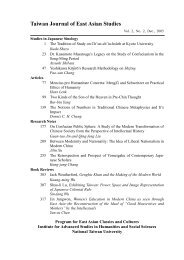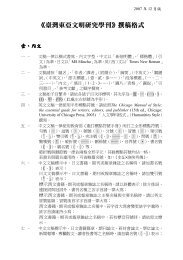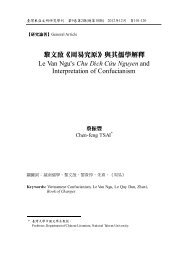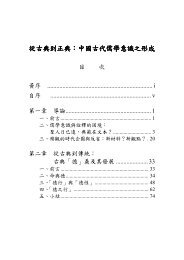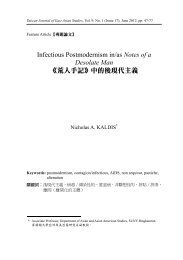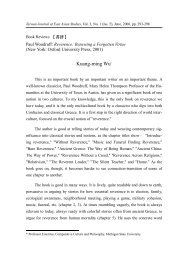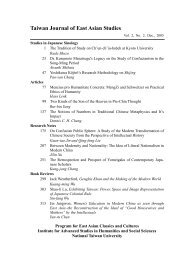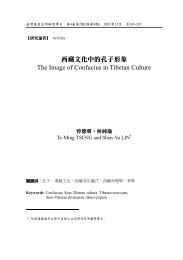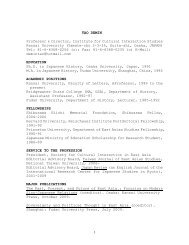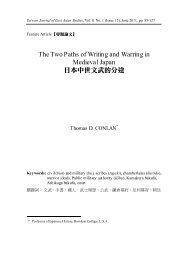臺灣東亞文明研究學刊 - 東亞經典與文化研究計畫 - 國立臺灣大學
臺灣東亞文明研究學刊 - 東亞經典與文化研究計畫 - 國立臺灣大學
臺灣東亞文明研究學刊 - 東亞經典與文化研究計畫 - 國立臺灣大學
Create successful ePaper yourself
Turn your PDF publications into a flip-book with our unique Google optimized e-Paper software.
Jeng-Guo CHEN Scottish Discussions of Indian Effeminacy in the Eighteenth Century 163<br />
nations; if its severity be applied to terminate the agitations of a free people,<br />
not to remedy their corruptions; if forms be often applauded as salutary,<br />
because they tend merely to silence the voice of mankind, or be condemned<br />
as pernicious, because they allow this voice to be heard; we may expect that<br />
many of the boasted improvements of civil society, will be mere devices to<br />
lay the political spirit at rest, and will chain up the active virtues more than<br />
the restless disorders of men. 30<br />
By the first quarter of the nineteenth century, few British clung to the illusory<br />
belief that India was a land of riches. Victorian philanthropists discovered that the<br />
country harbored a limitless number of starving and ignorant wretches, and Walter<br />
Scott was only one of the most famous promoters of primary education in India. But<br />
as the great mountains of gold and silver melted away from the popular image,<br />
India became no more manly. Effeminacy and virtue no longer stood in mutual<br />
opposition. Mountstuart Elphinstone, a former governor of Bombay who had<br />
consistently displayed a deep sympathy for the people he governed, would ever<br />
think of the Hindu as less than manly. Resolutely striking out against the<br />
unanimously held opinion that Indian history had not changed in two millennia,<br />
Elphinstone nonetheless remained committed to another European stereotype. 31<br />
Geography and climate determined character, he explained: "The inhabitants of the<br />
dry countries in the north, which in winter are cold, are comparatively manly and<br />
active [……] while the Bengalese, with their climate and their double crops of rice,<br />
where the coconut tree and the bamboo furnish all the materials for construction<br />
unwrought, are more effeminate than any other people in India." Although few<br />
Indians were as slothful as the Bengalese, "love of repose, though not sufficient to<br />
30 Ferguson, History of Civil Society, p. 210.<br />
31 Mountstuart Elphinstone, History of India, vol. 1 (London: John Murray, 1841), p. 102.<br />
xv



